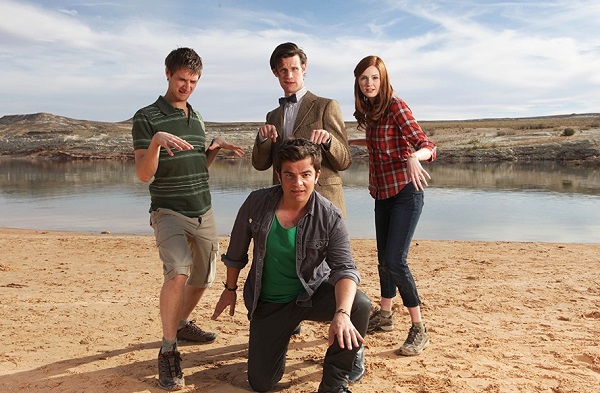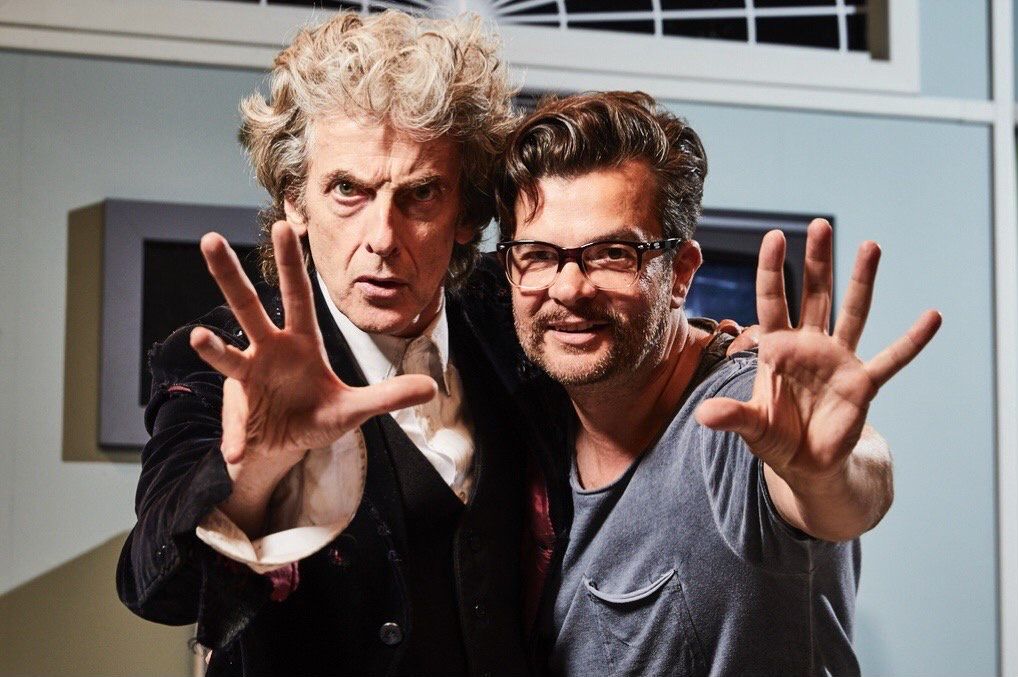If you’ve been looking on enviously at the overseas watchalong events taking place during the COVID-19 Lockdown but have been unable to take part due to the crazy impossible time difference between the UK and Australia, then here’s something for you! Past DWCA President Dallas Jones is following up on his two successful Australian watchalongs with a third event on Saturday 27 June – and this time he has chosen one of the true greats of classic Who, the epic, gothic and totally cool (pun intended) Tomb of the Cybermen. Check out the details below to take part.
Category: Uncategorized
Life During Lockdown
One of the more extraordinary things to come from Doctor Who fandom during the time of COVID-19 was the creation of a variety of new videos, written and performed by the official stars and creators of Doctor Who. These videos were released on YouTube, timed to coincide with the Lockdown shared watching events of various classic episodes. The project was founded by Emily Cook from Doctor Who Magazine, proposing the idea that fans simulcast watch-alongs of classic stories. What started as supporting the watch-alongs with live tweeting, interviews and other online material, quickly developed into a series of funny, beautiful, poignant and moving short films. Not only did they revisit classic stories in new ways, but they contextualised the importance of Doctor Who and its fandom in the midst of a real life worldwide crisis. Often discounted as frivolous by those who don’t see the attraction, fandom has in fact never been more relevant, proven by the unifying and thought-provoking way in which it has reached out to fans around the world during this time. The full set of videos can be found on the Doctor Who Lockdown YouTube page, but some key examples are included below.
Power of the Daleks Reaminated
Fans of Doctor Who were overjoyed back in 2016 when Power of the Daleks became the first full missing story to be treated to an animated reconstruction. It was released worldwide in cinemas, online platforms, DVD and Blu-ray to coincide with the 50th anniversary of the story’s first transmission. However, due to the tight time frame to meet that anniversary date, the animators felt that some aspects were rushed. They’ve also been polishing their art further through subsequent releases such as Macra Terror and The Faceless Ones. So it was that when the BBC was casting around for another 2020 release from the Second Doctor’s era, to celebrate the 100th year of Patrick Troughton’s birth (born 25 March 1920) the idea was floated to create a new definitive animated version of the story. Completely rebuilt and with all new special features, it will see release in the UK in July this year (with the Australian release date yet to be confirmed). Many fans were also excited to see that The Highlanders was listed as a special feature in some press releases, however it has since been confirmed that this is not the case. The intention had been to include the audio track of The Highlanders, but there were already so many special features there wasn’t adequate room to add it in the end and those plans have had to be dropped. There is as yet no news on what further animated reconstructions are in the works following Fury from the Deep (due out later this year) but there are certainly more in the works. The Highlanders will alas not be one of them, as it has been noted by the animators that the challenge of animating characters in tartan costumes is likely to be put off for as long as possible. While other releases have included both colour and black and white versions of the animated reconstructions, that will not be the case with the new Power of the Daleks. Many of the animation team were less than impressed when BBC America colourised their 2016 version. Seeing the story as a noir style piece, they will be sticking to black and white only for creative reasons on this one. With numerous Troughton releases coming out through 2020 to celebrate 100 years since his birth, perhaps that means 2021 will focus on Hartnell stories instead. The Daleks’ Master Plan perhaps? Well, we can hope…
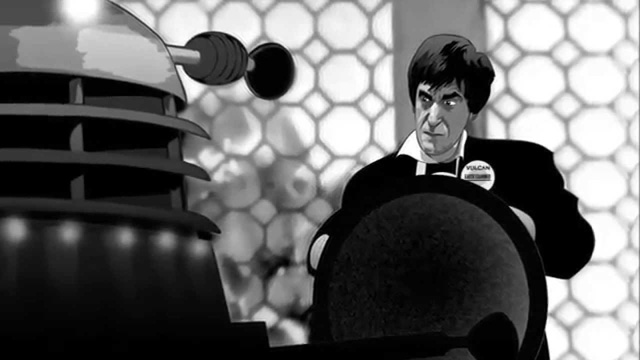
The Tenth Doctor Returns – Time Lord Victorious Coming Soon from BBC Studios
BBC Studios have announced a new Tenth Doctor story to be released later this year. Set directly after the events of The Waters of Mars and just before The End of Time, this new story will focus on the Tenth Doctor in his final days. It will also feature his Ninth and Eighth incarnations in an epic story played out across multiple platforms. Time Lord Victorious will see linked releases in numerous formats from all the publishers and producers of Doctor Who material, including Penguin Random House, Doctor Who Magazine, Titan Comics, Escape Hunt, Big Finish Productions, Eaglemoss Hero Collector, Immersive Everywhere, Maze Theory, BBC Books and BBC Audio.
So far details have been limited and many questions remain. Could Christopher Eccleston reprise his role of the Ninth Doctor for some of the productions? How will the story link in with the existing Doctor Who chronology and mythology? So far two novels have been announced – The Knight, The Fool and The Dead by Steven Cole and All Flesh Is Grass by Una McCormack. The larger Time Lord Victorious story that links both books is set within the Dark Times at the start of the universe when even the Eternals were young. Multiple incarnations of the Doctor must defend the universe from a terrible race called the Kotturuh, creatures who spread through the cosmos dispensing mortality, literally pitting life against death. Billed as a “whole new Time War” but set back in the Dark Times, could the Kotturuh be linked in some way to the Great Vampires that Rassilon fought in the first Time War? Only time will tell, but as new releases are announced there is sure to be mounting excitement for Doctor Who fans everywhere.
![]()
To celebrate the impending release of Time Lord Victorious the DWCA have included below a tale of the Time War that is set within the ruins of the first Time War, originally published in Zerinza Volume One.
“There was once an old hermit from the mountains of south Gallifrey. He used to tell me ghost stories. I like a ghost story. Do you want to hear one? It’s about a race of giant vampires. They came out of nowhere, and swarmed and swarmed. They swarmed all over the universe. And they were so strong that one single vampire could suck the life out of an entire planet. We Time Lords hunted them down across the universe in a war so long and so bloody that we were sickened of violence forever. So powerful were the bodies of these great creatures, and so fiercely did they cling to life, that they were impossible to kill. Rassilon ordered the construction of bow ships, swift vessels that fired a mighty bolt of steel that transfixed the monsters through the heart. For only if his heart be utterly destroyed will a vampire die. When the bodies were counted, the King Vampire, mightiest and most malevolent of all, had vanished, even to his shadow, from time and space. Hence it is the directive of Rassilon that any Time Lord who comes upon this enemy of our people and of all living things, shall use all his efforts to destroy him, even at the cost of his own life.” – The Fourth Doctor, State of Decay
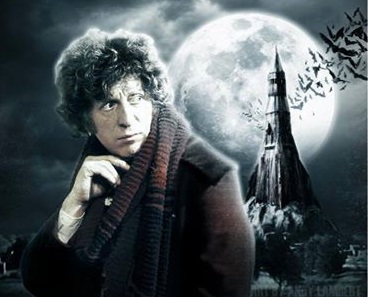 Elegy for a Tardis
Elegy for a Tardis
Written by Darran Jordan (Tlancyravel created by Scott Marshall)
She fell like a burning angel through the raging depths of a dark ocean, her thoughts scattered into an incoherent wail of cacophonic cloister bells. There was no way of knowing how long she had been falling, for here there was no time with which to measure. In the moments between now and now there was only thought and fear. She tried to grasp hold of herself once more, tendrils of her mind reaching out tentatively, looking for something of familiar gravity around which to orbit her fractured pieces.
There was no time here in the vortex, but time had obviously passed within the confines of her inner dimensions. The central column still rose and fell in her console room, but there was no sentient life with which to commune anymore. The telepathic circuits fed back only static, as her senses alerted her to the skeleton draped theatrically across the console, one bony digit reaching frantically for the fast return switch. Forever reaching, never touching, it was like some Michelangelo tableau substituting man with Time Lord, God with TARDIS.
Poor Tlancyravel, she thought, he had been such a precious pet. She had tried to protect him as time had shattered around them. So many shards had fallen, each of them holding the per-fect pearl of his endlessly replicating alternate deaths. Struck by a lightning bolt in Blackpool. Shot by the Chancellery Guard while descending Mount Perdition. Drowning in the Lake of Mutations on Skaro. Converted on Telos then destroyed in a battle against the Cryons. Ripped to shreds by a Raston Warrior Robot. Poisoned by the monk on the hillside above the ancient house of Lungbarrow. Or simply dying of old age, his regenerations used up, his last body finally wearing a bit thin. He would have been honoured by the High Council, bodily carried by them on a bier decorated with the ancient swirling symbols of Gallifrey, his aged intellect for-ever preserved within the glorious mesh of the matrix. The Time War had changed all that. The possibilities had been multiple, the shards of them cutting deep. Linking them all like jewels on a necklace was the central thread, a long sharp wound that had cut them both down in one jagged slash. “The Nightmare Child,” he had screamed, “it is upon us!” Then he had leapt at the console, falling into his final death as the monster had torn through them like autumn leaves in the breath of a furnace.
As she fell deeper into the vortex she became aware of singing around her, deep and sonorous, rising and falling like the waves of temporal energy that rippled through this impossible place. Towering around her in concentric circles like the inner walls of a deep well, hovered the combined might and wonder of the Chronovore ranks. These were the waters where they swam, braving dangerous currents to taunt and tease each other in games. They played like children while the Time War raged, refusing to take sides or lend hands. They claimed neutrality when-ever anyone dared to ask, but perhaps their reticence was more to do with the injury one of their own had suffered at the gun stalk of the Special Temporal Dalek.
Lord Upnash-Karatar, high Chronovore of the dark vortex, rider of the winds of time, eater of centuries and devourer of ages, had underestimated the purity of Dalek rage and was not keen to risk a similar error again. Still, he led his people in song whenever one of the TARDISes fell in battle. He had a fondness for the ephemeral, composing elegies of impossible beauty with which to honour those soon to be no more. She felt his gaze upon her as she plummeted. Be-side him hovered Chronos, healer of Dellah, destroyer of Atlantis, a being beyond either good or evil. Wearing the silver semblance of a beautiful woman, the Chronovore watched her fall with tears streaming down her cheeks. Their song lingered on long after they had been lost from sight, but in the end even that faded. She was gathering speed now, tumbling headlong into those regions of the vortex where none dared to venture, except on their final journey.
Despite the impossibility of mapping a region none could traverse, there actually were names for these places, although who had named them, when or why none could rightly say. Dramatic titles without sense or subtlety, they suggested the self-important tone of some Gallifreyan noble from days long gone. Perhaps great Rassilon himself had walked this path, although it was more likely to have been one of his subordinates, dying nameless so the dicta-tor scientist could claim the glory as his own. From games to scrolls to sashes to keys, he had stamped his name on everything he could, knowing well that history remembers best that which is shaped by words.
The name given to the shattering rapids beneath the shoals of the Chronovores was the Teeth of Yssgaroth. There the broken bodies of great bowships still stung and snagged at those few who passed this way. Giant winged skeletal forms lay embracing the bowships, clasping them through broken ribcages to their missing hearts. These were the tombstones of the last great Time War, a battle so ancient it was remembered now only as myth, as a bedtime story told to Time Tots to frighten them into submission. Propaganda to ensure they would stand tall before the Untempered Schism, refusing to run else they bring dishonour to their ancient houses.
Tlancyravel had stood tall when his time came, a proud boy of noble bearing and the dream of a glorious future. How would he have felt had he known then that it would all end here? A poor sad skeleton, lost and forgotten, drowned by the undercurrents of time. She remembered the first time he had touched her, in the bays of the temporal workshops beneath the Citadel. They forged singularities there, tying them like balloon animals as their time ships grew like coral in the solar oceans of pocket dimensions.
She had been presented to him without fuss or ceremony, designated Type 70, her outer plasmic shell no more than a featureless grey box. But he had seen her beauty and she remembered the dazzling colours of his emotion, rushing to her through the telepathic circuits. He had re-moved the black glove from his right hand and pressed the smooth warmth of his palm against her body. A spark of artron energy had passed between them, a connection that he did not speak of, not to anyone, only to her. She was glad he was with her still, even if it was only the bleached bones of his body that remained. He had loved her in his way, as she had treasured him. It was only right they were to remain together forever, here in the heart of eternity.
As she spun uncontrollably through the Teeth of Yssgaroth she felt the dark star alloy of the ancient vehicles slicing through her dimensions, scattering pieces of her into the waters of her wake. The library, the swimming pool, two art galleries and a boot cupboard were cut from her body, quickly sinking into the morass behind her as she was swept ever on. She bounced off the hull of one of the great bowships, spun through the eyehole of one of the giant vampire skulls, and shot out through the last of the rapids into the tranquil pools beyond.
She rested for a moment in the shining still that someone had once named Staircase of the Sisterhood. It was not a safe port however, for these calm waters were infested with the Shimmer Sharks. Silver bodied finned bullets of pure energy, they sucked dry those who were washed up here, feeding frenzies frothing the gentle mirrored calms into terrifying torrents. There were those who hypothesised that these unthinking monsters of pure instinct were nothing less than those who had fallen prey to the Time Lord De-mat. Removed from time, edited out of continuity, they extruded back into reality in liquid shapes of ravenous mercury, hunting for a revenge they could no longer comprehend. She felt their sharp fins as they circled about her, but before she could contemplate how best to defend herself, the school changed course and swam on. They sensed she was dying and saw no meal in her. Satisfied and resolute she paddled onward, making her way from pool to pool as she continued downward, ever down.
There were other sights to see along the way, other dangers to avoid. She made sure to keep to one side of the Island of Omega, avoiding being drawn into the pull of the whirlpool known as the Eye of Discord. She kept her distance from the broken wreckage of ancient time ships, failed experiments and forgotten explorers of civilisations that had risen and fallen countless times while these relics were preserved forever in the energy shoals, insects in amber. Finally, after carefully swimming on as best she could, the core of her being flickering and fading as she did, she finally reached the last place that was a place – the last location in the vortex with a name – Bad Wolf Bay. Beyond the lonely seclusion of this lay only the waterfall, a vast energy cascade that tumbled away into inky dark. None who wished to live would ever have chosen to go near it, but that choice had been taken from her by the Nightmare Child. She was dying, the cracks in her shell threatening to fracture her into pieces at any moment. After her perilous pilgrimage she was barely able to hold enough of herself together, her inner dimensions already leaking through the damaged semblance of her outer plasmic shell. Without hesitation she hurled herself over the precipice, and fell. And fell. And fell.
It resolved slowly out of the darkness, at first a tiny point, growing gradually larger, ever larger. This was a mark not of its size, since it was truly vast, almost endless if concepts of distance held any value in the place between places. Rather it was an indication of just how far away it really was. As she fell toward it she took in its shape and texture, its gleaming white surface decorated by circled roundels. She found it beautiful. Her kind knew it only as the Reef, a secret that was passed from TARDIS to TARDIS, never even hinted at to any not of their kind. Had an ancient Gallifreyan ever come here they would have gifted it with another name. Without doubt, they’d have christened it the TARDIS Graveyard, for in the end it was to this place that all TARDISes came to die.
“We made it,” she sent to Tlancyravel, but the sad skeleton did not reply. She felt his bony hand upon her console, sensed ruptures on her outer shell, fractures on her surface at the place where his palm had first connected with her. The cloister bells reached their crescendo. The central column burst, scattering bones on a wave of white hot energy. Finally she let go, her shell exploding to spill dimensions in an endless rain. Hat-stands and phone booths and art-works and jewels, these and many other impossible things rained down as she was reduced to her constituent parts, torn asunder, reft and bereft upon the Reef. Slowly the many parts sank into the glowing coral, absorbed into the great mass of interwoven life, growing like a forgot-ten garden, beautiful and wild. Amongst folios, food machines, screwdrivers, sofas and clothes, the random bones of Tlancyravel shifted and sank with her. They were together forever now, unique pieces of coral in the endless ivory graveyard. Casualties of war, they were not lost, not completely, merely altered. In the secret depths of the vortex there was peace. But elsewhere, the Time War raged on, and more angels would fall before the conflict ended.
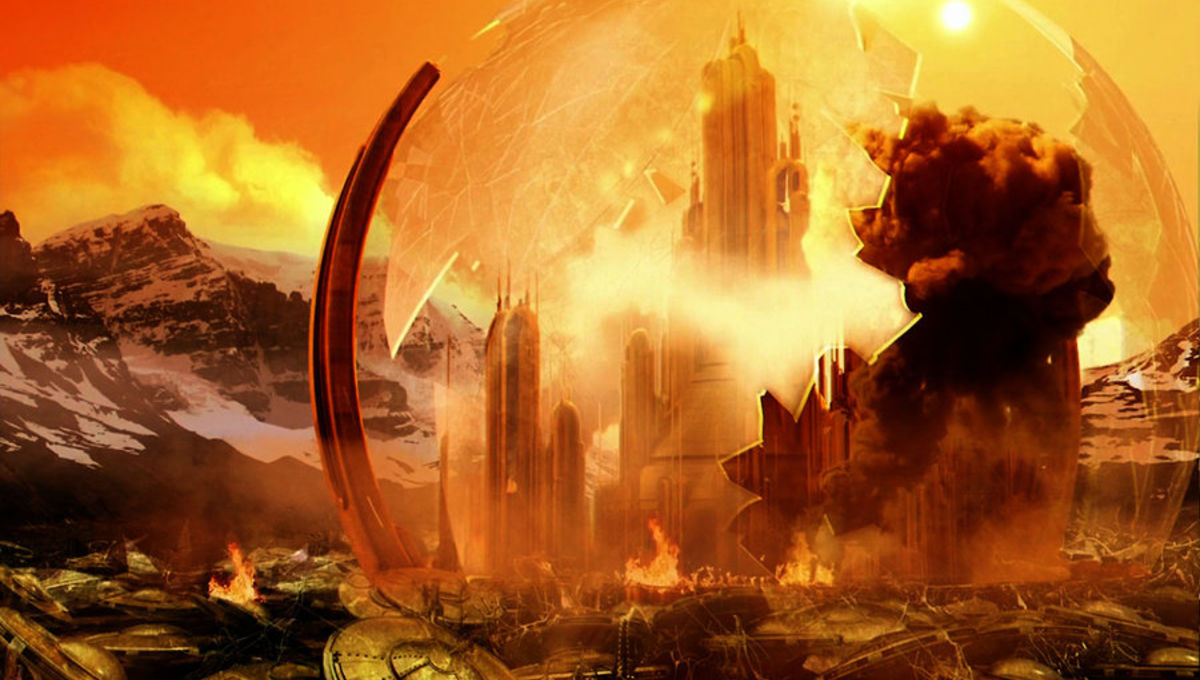
Join us in Making a Movie
The TARDIS of UNSW was a warmly received fan filmed produced in 2019 by UNSW’s DocSoc student group, part of a long tradition of fans telling their own Doctor Who stories. The DWCA’s last such production was well over a generation ago and now a new team of film makers are looking to throw their hats into the ring. The project is being masterminded by Thomas Walder (DocSoc) and Roger Reynolds (DWCA), and they’re on the lookout for script / plot ideas, actors, gaffers, costume designers, camera operators, sound engineers, make-up artists, and anyone else who can help out. As the COVID-19 pandemic has us all physically separated at the moment, the project is in its early stages and they’re keen to hear from people committed to help with making this project a reality once this lockdown runs its course. If you’d like to be part of the dream and maybe pick up a new skill, please read the Film Project guidelines, Here, and then contact Thomas and Roger at filmproject@doctorwhoaustralia.org to let them know your ideas and how you’d like to contribute.

Zerinza Volume Four Out Now
Stuck at home with nothing to do? Don’t worry – the DWCA has your back! We’ve just released Volume Four of Zerinza, which collects the entire Eleanor saga from the pages of Data Extract, along with new behind the scenes material. With articles, comics, stories and illustrations, this volume is a celebration of the power and originality of fan fiction in general as well as that of Eleanor and her supporting cast in particular. Eleanor Chaplette was devised by Craig Land and Dom Kelly for the Doctor Who Club of Australia’s flagship publication Data Extract and featured from issue 228 in 2015 to issue 245 in 2020. The book is available now in a beautiful hardcover edition from the club’s Lulu store here.
DWCA Events Cancelled due to COVID-19
Due to the health emergency of the Coronavirus (COVID-19) global pandemic, the DWCA and its local groups have made the difficult decision to cancel upcoming events. As soon as it is possible to safely host events later in the year the DWCA will look to do so.
The Canberra local group reports that since ACT libraries are closed so no meetings are currently scheduled. The Central West group reports they have no venues so no meetings are currently scheduled. The Newcastle local group have cancelled their meetings but are currently investigating if online meetings are viable.
We wish all our members good health during this challenging period. As we are all stuck at home until the spread of the virus abates, the DWCA will be endeavoring to provide you with as much diverting Doctor Who related entertainment as possible. Please reach out through online means as much as possible to stay connected and support each other through these difficult times.

DWCA Founder Kerrie Dougherty Awarded OAM
Kerrie Dougherty, one of the original founders of the DWCA, has had a long and interesting career outside the club which has seen her curating science fiction exhibitions, running Dalek races, writing books, and even undertaking academic work in space archaeology! One of her published papers, a case study of volunteer rocket retrieval in Australia, appeared in a Cambridge Scholars Publishing book that also had a paper on representations of archaeology in Doctor Who. Plus, she even wrote content for the Doctor Who Visual Dictionary. In 2020 her many achievements were formally recognised in the Australia Day honours list, where she was awarded a Medal (OAM) of the Order of Australia in the General Division.
The DWCA would like to extend our congratulations to Kerrie, and to honour her have included below the interview with her that first ran back in 2016 in Data Extract 233. Thanks to Lauren Davis and Dallas Jones for conducting the interview. The image below is a portrait of Kerrie by Melbourne Based Oil Portrait artist Leo Flander.

You graduated from Sydney University with a degree in archaeology – how did you then end up working at the Powerhouse Museum?
Well, I actually went on to study archive administration, but I was always a space fanatic as well as a science fiction fan. And after I finished the archives course – this is before the Powerhouse Museum actually existed as the Powerhouse – the Museum of Applied Arts and Sciences was advertising for a registration assistant for four months. I knew they wanted somebody to catalogue Sydney Observatory, which had just been taken over, but it had then been closed down as a functioning observatory and given to the museum to develop into a museum of Australian Astronomy. When I went to the interview, I made a point about the fact that I knew about astronomy, as well as having the historical and the archival knowledge. And that got me my first job at the museum cataloguing Sydney Observatory. It was supposed to be for four months and I was there for exactly 31 and-a-half years! That wasn’t too bad for a four month job!
While you were there I understand you managed to host Dalek races. How did that come about?
In 1995 we took an exhibition that was actually originally developed in Perth, called Special Effects: The Secrets Behind the Screen. And there were a couple of things I wanted to do with this exhibition, one of which was to get genuine science-fiction props into it, because the exhibition had a lot of interactive material, but not a lot of artefact material that actually related to science-fiction film and that. And of course, I wanted to try and get some Doctor Who stuff into there. I talked to the people at BBC Worldwide and persuaded them to let us have their Dalek. We did a bit of a deal with them – they wanted to have the voice circuit on it repaired, so they said they’d loan it to us if we repaired the voice circuit. So that’s what we did! If you happened to see that exhibition back then, we actually had the Dalek displayed in a nice prominent position and on a circuit it would go off and go “Exterminate! Exterminate!” and that sort of thing.
One of the things that we also do in conjunction with special exhibitions is we develop public programs to go with them. So I thought it’d be really nice if we could get them to start doing Dalek races as part of the public programs. Through the club I got in touch with various people who had Daleks and were prepared to loan them to us, so we could run a series of Dalek races at different times across the life of the exhibition. That restarted the program of having Dalek races every so often, at the museum.
What sort of care did you have to take in handling the original props?
As you would with any museum artefact. We treat everything that comes into the museum, even if it’s only a film prop, as a valuable artefact in the same way you would treat a Fabergé egg. They are handled appropriately with gloved hands – you treat them as if they were really valuable artefacts. In terms of their social history context they are really valuable artefacts.
Is there a contrast between that and holding Dalek races?
Ah, but those Daleks are fan made, so they aren’t artefacts. The difference is, with the Dalek races, that those are fan made props, so they haven’t been used in the show. With the Dalek races, the people who built the Daleks usually brought their own, which is a different thing from the BBC or Lucasfilm or somebody else entrusting their materials to us to put on display.
Is there much of a difference between curating and policing a museum of historical artefacts and a museum of science-fiction?
Curating is a particular thing that you do – policing people is what the museum security people do! But when you design an exhibition, you design it so people don’t get the chance to damage the objects. You’ve got to allow people good visual access, but at the same time you can’t allow them to touch it. And you certainly can’t give them the opportunity to steal it. One of the things that we always tried to do at the Powerhouse was to have as much on open display as we could. But then that requires you to design the exhibition so that people can’t touch the objects. With the Dalek, for example, we had that on an open display, but it was set at the back of a plinth with about a metre in front of it, so you couldn’t reach over and get to it over the barrier.
It was the BBC’s decision that people weren’t to photograph it, though. Generally speaking, you don’t allow a lot of photography, because even though one person’s flash isn’t doing a lot of damage, a million people’s flashes are going to fade textile paper. A lot of delicate materials will be faded by ultraviolet light. So you simply can’t have several hundred-thousand or several million people over time taking flash photographs of an object.
About the BBC Dalek… just some background on why they were protective. When it was brought out here, it was brought out here for the Royal Easter Show. They also had Doctor Who showbags… but then at the end it cost too much money to send the Dalek back! So they kept the Dalek. But then they wanted to use it, so they lent it to a video store in Manly. When they got it back, word came down that it was never to be lent out again because it nearly got destroyed.
When it came to us, the electronics weren’t working and they wanted our technical people to fix the electronics for it. But in fact, we also believe that in the Powerhouse collection, we now have the original ring modulator that was used to create the first Dalek voice. Because Tristram Carey, who did some of the early incidental music for Doctor Who, came out to Australia in the late seventies to do some set-up of electronic music instruments at the University of Melbourne. He then came back to Australia and decided to stay permanently. When he passed away, his collection – all the contents of his studio and everything – was donated to the Powerhouse. And among that we found a ring modulator, and the notes that were with it suggested that it was the one they originally used to make the first Dalek voices back in the Radiophonic Workshop!
You’ve also written some Star Wars books and some Doctor Who books – can you tell us about your books?
When we did the first Star Wars exhibition at the Powerhouse Museum (Star Wars: The Magic of Myth), we wanted to update the exhibition to add new material for Episode One and Episode Two, because they weren’t represented in the original exhibition, which was put together before the release of the prequels. And because we were adding this new material, that meant the labels and everything had to be written for it. Lucasfilm were really good to work with, actually, but one thing they were very protective about was the canonicity of everything that was written about Star Wars. So the labels and the text that I had to write for this additional material, to provide context to it in relation to the rest of the exhibition, they had to check that. And then their licensing person over there, who looks after all the written material, decided that he liked my writing style. So he got onto DK Books, who produced the Star Wars cutaways and visual encyclopaedias and that sort of thing, and said “look, if you’re looking for another writer, give this woman a try.” So I wrote all the Episode Three stuff for a reference book called Star Wars: Complete Locations.
Anyway, DK was obviously happy enough with my work, because when they were doing the first Doctor Who Visual Dictionary, they needed somebody take over from one of the authors who was sick and wasn’t able to take part in it. So they said, we know you’re a Doctor Who fan – would you like to do this additional work? And that’s how I got to do the original Visual Dictionary! I did several spreads, or double-page type things. To my own surprise, quite a bit of my original work has continued to filter through the different, more recent editions. And my name is still in the front somewhere, on the title page. It actually fascinates me how much of my original text from the first edition is still turning up in the most recent one. I’ll be interested to see when the next one comes out how much of it is still there! But it was just good fun working on it and it was interesting.
In some ways it was easier than doing the Star Wars books. In other ways it was harder, because the BBC actually allowed you to a certain extent to be a bit more creative than Lucasfilm. Lucasfilm wants everything to be inside what they’ve established in the canon. Whereas Doctor Who was both more restrictive in one sense – everything I said, I had to provide a source for, blah blah. But if I came up with something that they liked, even if it was my own interpretation from XYZ, then it was allowed to stay.
What about the inside the TARDIS features you had to do?
That was really weird. When you do these, you get the visual for the spread, that’s already designed. So you get a page and it’s got those pictures on it, and you’re supposed to come up with all the writing to make those features fit together. And sometimes I really wondered what on Earth they were thinking when they put together the selections of images that go on an individual page. So anyway, with this TARDIS one, the spread included this very lovely but very strange piece of artwork, which was something that they identified as being called the Time Sector. And this was supposed to be the basic structure of the TARDIS, which was something that had never been seen anywhere before. It was clearly something that they’d decided to make up for this book. But all I get is the artwork and then I’ve got to figure out how to explain it! So that was quite an interesting challenge. But it was good in one sense, because I really did have freedom to come up with explanations for what the shape meant and what the components of it were and how it related to the TARDIS. I’ll note, though, that it wasn’t used in any of the later ones. I suspect that the BBC might have decided that they weren’t happy with having that image imposed on the TARDIS. I don’t think it was something they’d completely signed off on.
Wasn’t there another one where you had to describe the Tenth Doctor’s shoes?
Oh yes! This was another one where, with some of the images, they put lines saying ”we want you to annotate something here”. This one was the anatomy of the Doctor. So all I get is the picture and the lines pointing to different parts of the Doctor and I’m supposed to come up with the annotations. But again, I wonder sometimes what the hell they were thinking when they drew these lines to different places. Because some of them, it doesn’t seem to make a lot of sense as to why they’d draw a line to point X. One of the ones they drew a line to in this was the shoes. What can you say about the Doctor’s sneakers!? We’re not going to say the Doctor has smelly feet! They’re not psychic paper sneakers or something, so what are you going to say about them? So in the end I wrote: “comfortable shoes for a quick escape and lots of running”. And this is what I found quite funny – with a later one of Capaldi’s Doctor, they showed his shoes, still with an annotation, but it said: “comfortable thick soled shoes suitable for running – useful when making a quick escape”. So they didn’t use exactly my original words but they kept the idea of making the shoes for a quick getaway! I just thought that was quite funny because I literally wrote the original as an off-the-cuff thing simply because I didn’t know what else to write, but it survived!
Moving back to the Powerhouse, you were the museum’s curator of space technology. What was it like curating items knowing that they had left the Earth’s atmosphere and been out in space?
Not a lot of the items that I had, had actually left the Earth’s atmosphere. Most of the items were either replicas or un-flown hardware examples. I would have killed for a lot of things that had left the Earth’s atmosphere! I didn’t always have that opportunity, but when you do have the opportunity to handle artefacts that have flown in space, it’s just very special. They don’t glow in the dark. They don’t have something that says on them “been in space”. But when you know they have, it just makes them that little bit more special to you, that they have been beyond the Earth and touched the infinite in a way that the Doctor himself does. I always liked working, when I could, with artefacts that had been space-flown.
And I believe you’re undertaking your own research into space archaeology at the moment?
Ah, no, what I actually am is more of a space historian. At the moment, I’m doing my PhD on the history of Australian space activities, which doesn’t necessarily touch on what you would formally call space archaeology, but it does delve into the political and scientific history of activities that Australia has been involved in in space and space-related areas. That’s what I’m doing my PhD on at the moment.
When you were working at the Powerhouse, was there ever an attempt at putting on a Doctor Who exhibit there?
There were a couple of different things. There was a point where we were trying to bring out the exhibit that was created in 2007-2008. We did actually look at trying to bring that out to Australia. The negotiations were moving along reasonably well, and then the BBC decided that they would do the new exhibition in Cardiff, and pulled all the licences from other people who had exhibit licences with the BBC, which included the people that we were dealing with at the time. So they were no longer able to tour their exhibition, because the BBC wanted to take all their props back to have them available for the development of the Cardiff exhibition. Similarly, there was some talk from the BBC about doing an exhibition in Australia for the 2013 anniversary. We sort of said to them, rather than 2013 let’s focus on 2015, being the fiftieth anniversary of Doctor Who here in Australia. So we were kind of trying to steer them towards doing that, but again for various reasons at the BBC, the whole thing fell apart so unfortunately it didn’t happen.
And now, well – I’m not there anymore and the current director would no more have a Doctor Who exhibition than slit her own throat! So I can assure you there will not be a Doctor Who exhibition anywhere in the near future.
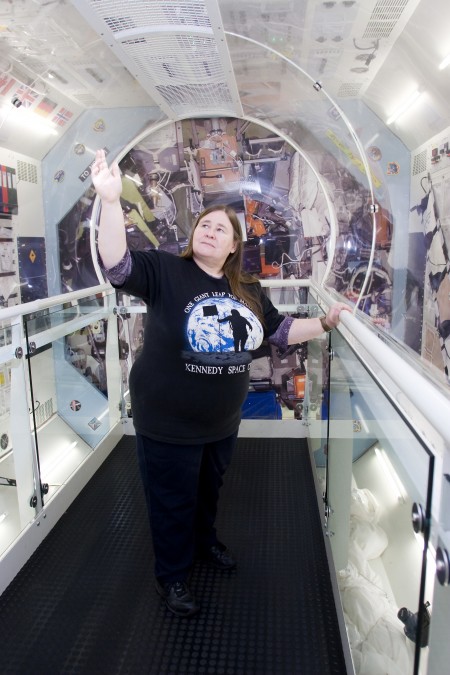
Kerrie’s Medal (OAM) of the Order of Australia in the General Division of the 2020 Australia Day honours list was given for her service to astronautical history as a curator:
- Independent space historian, curator and writer (current)
Museum of Applied Arts and Sciences (Powerhouse Museum) Sydney
- Curator, Space Technology, 1983-2014
International Academy of Astronautics
- Co-Chair, History of Astronautics Committee (current)
- Member, Space Museums and Science Centre Committee (current)
- Member of the Academy, elected 2012.
- Editor, several volumes of ‘History of Rocketry and Astronautics’ (proceedings of the Academy’s annual symposium on the history of astronautics), International Astronautical Federation
- Member, Education and Outreach Committee (current)
Other service includes:
- Lecturer, Department of Space Humanities, International Space University, since 2001
- Member, National Space Society of Australia and Space Association of Australia (current)
- Most recent exhibition – From the Outback to Outer Space: Woomera1955-1980, National Archives of Australia and State Library of South Australia, 2017.
- Author, Australia in Space, 2017 and Space Australia, 1993.
Past awards and recognition also include:
- Recipient, Sacknoff Award for Space History, 2015
- Recipient, Australian Space Pioneer Award, National Space Society of Australia.
Meeting Yaz – Interview with Mandip Gill
The latest season of Doctor Who has just ended, leaving much for fans to debate in its wake. There was a new Master, Gallifrey’s destruction (again) and the revelation that the Doctor has forgotten multiple lives, all lived before the First Doctor and his granddaughter ever even thought to go see the universe. One of the major players in this season was of course Yasmin Khan, played by Mandip Gill, so while we reel from the end of the series, the DWCA has presented here the interview with her that first ran back in Data Extract 241.
Thanks to interviewer Kevin Suarez from 2SER for conducting the interview.

Was working on Doctor Who how you imagined it?
Before I got the audition, I didn’t imagine it. I didn’t know what it would be like, I thought it was worlds away from anything I would be able to do or be in. And when I got it, I was like “I actually don’t know, you can’t expect anything because it’s so random!” And it turned out to be really random and it turned out to be better than I expected. It turned out I made friends for life. I found this new series that I absolutely loved – I’ve been taught so many things while doing this series about history and about space and time and it’s just been mind-blowing.
What I love is, when we’re on set doing something, it often turns out that it looks very different when it finally gets to screen. So for the nine-month process I really enjoyed myself, but I still have now 10 episodes to enjoy with you guys because I have no idea what they look like!
Often when you do other shows, you basically know what it’ll look like, because its drama and nothing’s added. But with all the visual effects and the sound and the grading and the monsters added, it’s completely different. Now I get double the time to enjoy it.
When it comes to your character of Yaz, or Yasmin Khan, what did you want to bring to the character?
It was already written, but there was this sense of truth when we went in to the audition. There’s a lot of truth this series, a lot of drama, real connections and relationships and I just wanted to embed that into my character. I wanted her to be a three-dimensional character with lots of faces and genuine emotions. I didn’t want her to be always scared of a monster or always be upset in certain situations, I wanted to find a natural angle.
So I’d think, “we’ve been on the TARDIS for x amount of time, how would she react to this particular monster?” Then how is that different to when she first sees her very first monster or the first time she going into a spacecraft? I just wanted it to be very truthful, wholesome, and real so that every week, people were finding a new little bit of Yaz, and can go “she’s real! I can connect with her because this week she’s upset but that might not have upset her last week!” She’s been on the TARDIS a little bit longer, she’s missing her family and that really does upset her.
Team TARDIS met Rosa Parks, with an amazing exploration of the Civil Rights Movement and racism, both in the past and present. Will we see the Doctor delve into more contemporary political issues such as racism and misogyny?
Yeah, you will do. Obviously I can’t say too much but there is a few more episodes where that is touched upon, and like Rosa, there are historical episodes that touch upon issues that are still prevalent now.
On a similar note, how has it been representing British – Indians on the show?
To clarify, I’m Indian and the character I play is Pakistani. Just representing an Asian person that isn’t a stereotype, and is a three-dimensional character, an ordinary person in extraordinary circumstances and is relatable, it’s really important to me. I’m glad I’ve had the chance to do it with such an amazing team of writers, working with people and directors of colour.
I’m very fortunate that I’m in a place where there is a shift in what is being created, also a shift in the stereotype of Asian people. We have amazing stories on Doctor Who, and a lot of them are not to do with the fact that Yaz is Asian – it just so happens that she is Asian – but she’s also a police officer and a young girl from Sheffield who misses her family but is excited to go on this journey. In one episode, Demons of the Punjab, I think it’s really clever how Chris (Chibnall, executive producer) touches upon her being Asian and we go back and visit Yaz’s history. But then again, not every episode is about how Yaz would react because she’s Asian. She a young girl from Sheffield who has her own issues and her own struggles on this journey. She happens to be brown.
Where (or who) in history would you like to visit (or encounter)?
We get asked this question a lot and it does change because I’ll answer it and I’ll go “I can do better than that. I have a TARDIS and I chose that.” So I’m going to settle on the beginning of time, and we go back and see how it was created and get all the facts. I know what I think – obviously people believe in different religions and sciences, so I’d like to go back and see if it was the Big Bang, see if evolution really happened, and see how we got here.
Everyone’s so hellbent on going “no, I don’t wanna go to hell! I’ll be a good person,” and me being that person, thinking that. Then I go “I don’t know where I came from!”
That’s just as interesting, exciting and scary as where I’m heading, but I know where I’ve come from.
How are the group dynamics both on screen and behind the scenes?
It’s quite similar, the dynamics, in that we absolutely get along. We’re so lucky that there was chemistry there from the offset – there was no need for us to go to dinner, or work together for a few weeks and warm to each other. We literally get on so well. We found the dynamic with our personal relationships and there’s a different dynamic in the TARDIS. For instance, Brad(ley Walsh)’s character Graham is very serious, doesn’t want to go along with it, very apprehensive, but Brad in real life would throw himself down the stairs just to make you laugh. (laughs)
We’ve seen a bit of Ryan and Graham’s family life so will we be seeing insight into Yaz’s family life?
Yeah, definitely. We visit Yaz’s history in Episode 6 (Demons of the Punjab). We meet her mum in the next episode (Arachnids in the UK) and she’s played by Shobna Gulati. So we do touch upon it just as we have touched upon Ryan’s history. I think that it’s just that everyone’s said to me that we haven’t see much about Yaz but Chris has done this natural journey You have time to breathe and we go on a journey with each character, rather than a bombardment of everybody’s story at the beginning. If it were like that, and we were forced to like these characters. It would be overwhelming. I just love the way that it’s naturally breathing, so that people feel like they know Ryan who’s developed over the last couple of episodes, and he’ll continue to develop. I was marinating in that mix, and then we go see my family and then we touch on Graham’s personal life.
It was really nicely done and it allows everyone to invest in each character and see who they like or who they may not like and that’s fine.

Doctor Who Brand Manager Edward Russell at Sydney Day Event 1 March
You may never have heard the name Edward Russell before, but you can be sure there aren’t many people who have had as much to do with post-2005 Doctor Who behind the scenes than him! Working as Brand Manager for the show from 2006 to the end of 2017, he worked on the BBC Proms, the Symphonic Spectaculars, oversaw the range of Doctor Who books, arranged photography on the show and (of course) dealt directly with the many talented people who brought the show to life.

When a guest was needed for the Christmas Special it was Edward Russell who found a way to get Kylie Minogue on board the Voyage of the Damned. When Matt Smith arrived in the role as the Eleventh Doctor it was Edward Russell that went on a bus tour with him, visiting schoolchildren across the UK. He went to multiple events, hung out with David Tennant, Lis Sladen, Peter Capaldi, Karen Gillan, Freema Agyeman (and many others), worked with writers and artists and photographers and was there on the set during the filming of some of the most iconic moments in Doctor Who history.
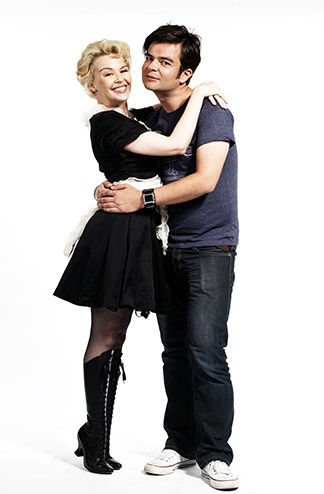
“There is almost nothing which had the Doctor Who name on it between 2006 and 2017 which I wasn’t involved in to some degree,” Edward Russell himself has stated. A wealth of behind the scenes stories, he has agreed to share them all with Australian Doctor Who fans at a one day only event on Sunday 1 March at Club Ashfield in Sydney, NSW.
Located at 1-11 Charlotte Street Ashfield, right next to Ashfield Railway Station, this friendly club promises to host a very unique Doctor Who event. The club also has an Italian Bistro and an award winning café serving wood fired sourdough sandwiches, salads, burgers and desserts. So come along for the day and meet the man behind the Doctor! The event will run from 10 am to 5 pm – make sure you don’t miss out!
